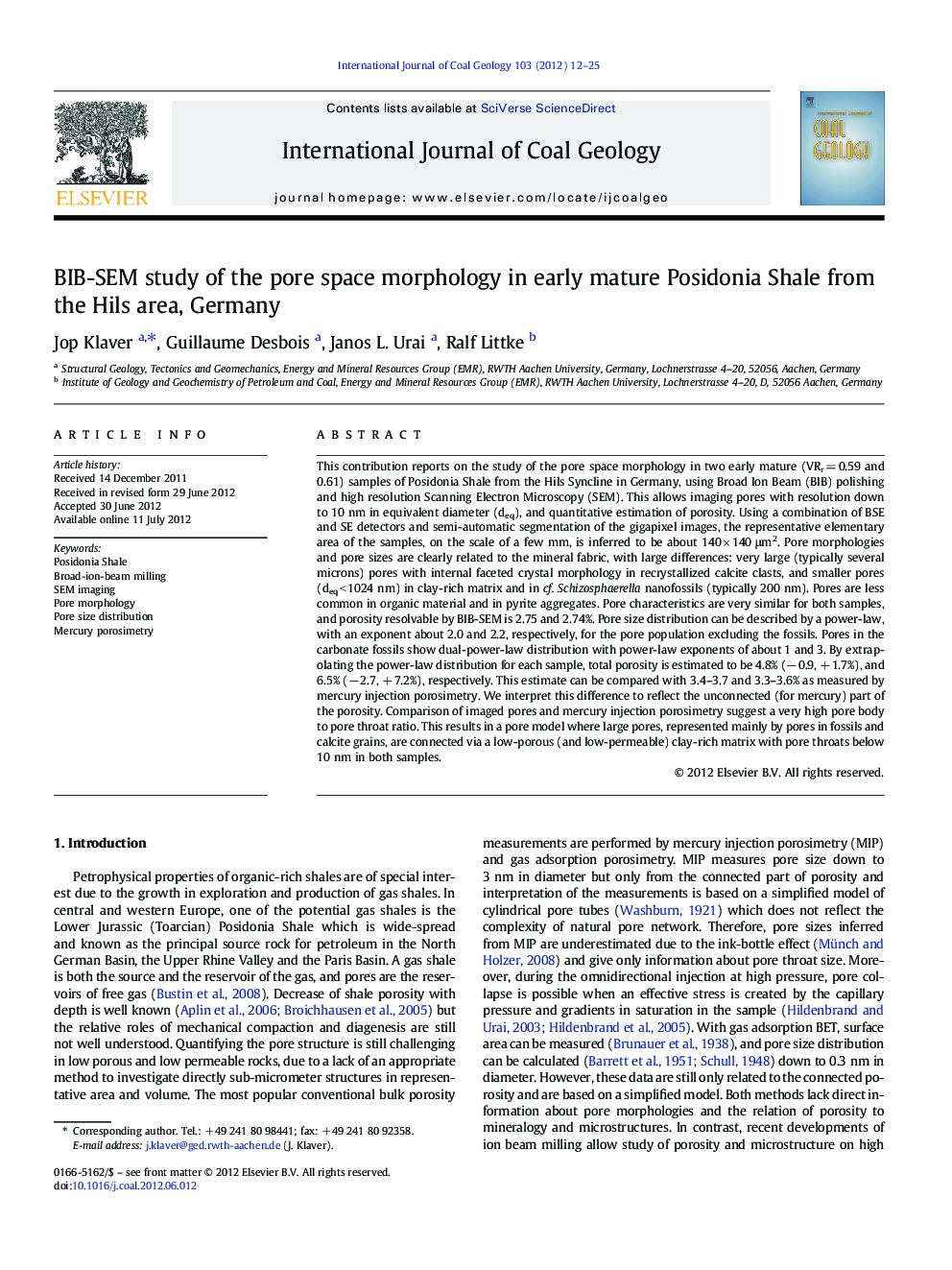| کد مقاله | کد نشریه | سال انتشار | مقاله انگلیسی | نسخه تمام متن |
|---|---|---|---|---|
| 1753376 | 1522591 | 2012 | 14 صفحه PDF | دانلود رایگان |

This contribution reports on the study of the pore space morphology in two early mature (VRr = 0.59 and 0.61) samples of Posidonia Shale from the Hils Syncline in Germany, using Broad Ion Beam (BIB) polishing and high resolution Scanning Electron Microscopy (SEM). This allows imaging pores with resolution down to 10 nm in equivalent diameter (deq), and quantitative estimation of porosity. Using a combination of BSE and SE detectors and semi-automatic segmentation of the gigapixel images, the representative elementary area of the samples, on the scale of a few mm, is inferred to be about 140 × 140 μm2. Pore morphologies and pore sizes are clearly related to the mineral fabric, with large differences: very large (typically several microns) pores with internal faceted crystal morphology in recrystallized calcite clasts, and smaller pores (deq < 1024 nm) in clay-rich matrix and in cf. Schizosphaerella nanofossils (typically 200 nm). Pores are less common in organic material and in pyrite aggregates. Pore characteristics are very similar for both samples, and porosity resolvable by BIB-SEM is 2.75 and 2.74%. Pore size distribution can be described by a power-law, with an exponent about 2.0 and 2.2, respectively, for the pore population excluding the fossils. Pores in the carbonate fossils show dual-power-law distribution with power-law exponents of about 1 and 3. By extrapolating the power-law distribution for each sample, total porosity is estimated to be 4.8% (− 0.9, + 1.7%), and 6.5% (− 2.7, + 7.2%), respectively. This estimate can be compared with 3.4–3.7 and 3.3–3.6% as measured by mercury injection porosimetry. We interpret this difference to reflect the unconnected (for mercury) part of the porosity. Comparison of imaged pores and mercury injection porosimetry suggest a very high pore body to pore throat ratio. This results in a pore model where large pores, represented mainly by pores in fossils and calcite grains, are connected via a low-porous (and low-permeable) clay-rich matrix with pore throats below 10 nm in both samples.
► BIB milling gives access to 2D pore space in undamaged, mm2 areas.
► BIB-SEM allows qualitative and quantitative study of porosity down to 10 nm.
► Pore areas are power law distributed.
► Comparison of BIB-SEM analysis with MIP exemplifies the pore connectivity.
Journal: International Journal of Coal Geology - Volume 103, 1 December 2012, Pages 12–25